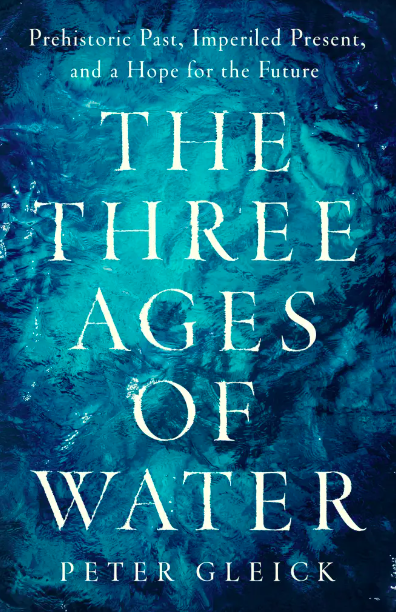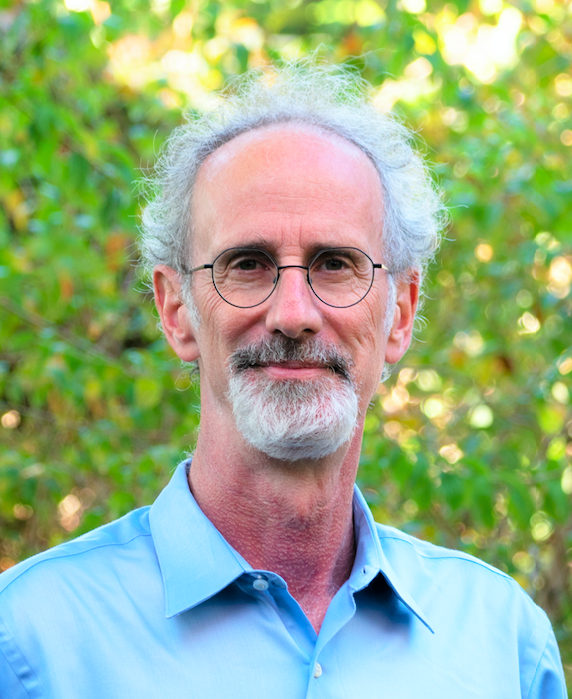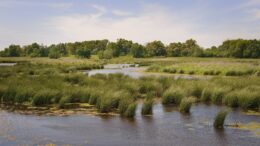It’s time for a reckoning … with water. It’s central to our bodies, the planet, our modern lives, and yet we continue to use it unwisely, to pollute rivers, to overdraft groundwater, to dewater ecosystems, and to leave some of our fellow humans without this most basic necessity.
Faced with mounting water problems, compounded by biodiversity loss and climate change, we have an opportunity — and a necessity — to chart a new course.
“We are a minor character in the scientific epic of water — and we’re at a moment in time when we must decide whether to recognize that fact and all its consequences and move to a sustainable and equitable future or to barrel forward in catastrophic denial,” writes Peter Gleick in his new book, The Three Ages of Water: Prehistoric Past, Imperiled Present, and a Hope for the Future.
Gleick, a scientist and founder of the global water think tank the Pacific Institute, has been a leading voice on water’s connection to conflict, climate change, human rights and privatization. He’s written 14 books but it’s his most recent that brings together much of his work over the past three decades into a call for action.
The book stretches from the Big Bang to our future path.
Gleick’s first age covers how water shaped the planet and later how it shaped the lives of early humans. The second age encompasses advancing civilizations like the Greeks and Romans and continues into our own lifetimes. This includes the advent of aqueducts and dams, deadly waterborne diseases, scientific and technological breakthroughs, and “replumb[ing] the entire planet” — what Gleick calls the “hard path.” The third age is what lies ahead, and Gleick presents a “soft path” that takes humanity on a less perilous course than where we’re currently headed.
The Revelator spoke to Gleick about where the “soft path” takes us, what conflicts lie ahead, and how far we’ve already come.
Why this book now?
This book is in many ways a sort of culmination of all of the work I’ve been doing. It’s a synthesis of my thoughts about the role that water has played in human history. It’s also a reflection on the water crisis that we’re facing.
But maybe most importantly, from my point of view, it’s an opportunity to talk about the choices we have today to move forward to a different future, a better future.
I offer an optimistic view, a possible future that’s more sustainable and more equitable than the one [we’re headed to] if we follow our current path. I really think of it as the book I’ve been wanting to write for a long time to address all of those pieces.
What should we learn from earlier people?
We’re much more dependent on water than we really understand in general. Many of us, not all of us, take the advantages of the second age of water for granted — the science and technology that developed that permitted us to turn on the taps and flush our toilets and wash our clothes and grow food.
But [earlier civilizations] couldn’t really take water for granted in the first age of water. They had to figure out how to manage it in order to survive, to support populations, to maintain the empires that developed over time. In some ways, we’ve lost that connection to water that I think many of the earlier cultures had to have.
What is the soft path?
I think of what we’ve been doing in the second age of water as the “hard path.” Hard as is in hard infrastructure. Hard as in not-flexible institutions. The hard path ignored ecological values in decisions about water. And so many years ago, I formulated this idea of the soft path for water.
The characteristics are the need to rethink supply. That is, instead of taking more water out of natural systems — more water out of rivers, more overpumping of groundwater, more draining of lakes — we rethink supply. Alternative ways of thinking about supply are recycling and reusing water, capturing more stormwater, and desalination. These are nontraditional supply options that have the potential to reduce the impacts we have on the hydrologic system.
The second aspect is rethinking demand. In the hard path, demand was something to be met. If there’s an assumed demand for water, let’s meet it. That’s true for resources in general. Populations grow, economies grow. We’ll figure out where to get the resources for them. But in the soft path, rethinking demand means a focus on conservation and efficiency. Doing more with the water we already have, that we’re already extracting. Grow more food with less water, making semiconductors more efficiently. It’s basically an efficiency revolution, and I would argue we’re already doing a lot in that area.
The third area of the soft path is ecological values: incorporating the critical needs of ecosystems into our decisions about water policy. In the hard path, we didn’t think or didn’t care about the environment, but those days ought to be over. And the soft path says ecological values are critically important and need to be integrated into water policy, planning and management.
The fourth category is economics. The hard path thinks about water as an economic good. The soft path thinks about water as an economic good, but also a human right. The human right to water has largely been ignored. I wrote about the human right to water in the 1990s. And in 2010, the United Nations finally formally declared a human right to water. But we’re still not very good about understanding what that really means for water management.

There is an economic value to water, and there’s a human right to water. And the soft path says combine them. Think about them together. Part of that means providing basic water and sanitation services for everyone on the planet, independent of economic ability to pay. The ability to pay shouldn’t be relevant to whether or not people have access to safe water and sanitation.
The final category in the soft path is rethinking our institutions. Institutional development around water has been very fixed. We have water utilities. We have water management systems. They tend to be old school, very narrow, very disciplinary. And the soft path says we need better institutions that are more decentralized, that integrate water with energy, and water with food, and water with climate. And the institutional structures we have now for water aren’t good at that, but the soft path says better institutions would be more interdisciplinary, more integrated, more community focused.
How well are we doing this already?
I argue in the third age of water that what needs to be done isn’t magic — and that these things are already happening.
There’s a figure in the book that shows economic productivity of water in the United States going way up. It’s evidence that we’re doing more, even with just the economic things we can measure with the water we’re already using. It’s direct evidence of the success of efficiency improvements and pieces of the soft path.
There’s another graph that shows that our economy is continuing to grow. Our population is continuing to grow, but our total water use has gone down. That’s evidence, in my opinion, that this new path is not only possible, but that we’re in the transition now. That’s why I describe myself as an optimist, because I see some of the things that are low-hanging fruit actually being captured, and I see success stories and evidence in each of those areas of the soft path where things are being done differently.
Is this path an opportunity to address water and climate solutions together?
It takes a lot of energy to produce and to collect and treat and distribute and use water, and then to collect and treat the wastewater we produce. Anything that we can do to reduce the water footprint of our energy use has the potential to reduce greenhouse gas emissions. Some of the cheapest carbon emissions reductions now available turn out not to be energy efficiency policies, but water use efficiency policies, especially things that save hot water. So there’s a clear opportunity there for tying water and energy together on the mitigation side.
On the adaptation side, some of the worst impacts of climate change on water resources are changes in demand for water because of rising temperatures, loss of soil moisture for farmers from higher temperatures, changes in precipitation patterns, loss of snowpack in the mountains, faster runoff of snowpack when we do get it because of higher temperatures, more extreme events, and more frequent extreme events. All of those things are happening already.
Tying water and climate together in people’s understanding offers us an opportunity to address both problems. If people care about water, if you can explain to them the connection between water and climate, maybe we can help them care about climate.
What are other areas of concern?
Water and conflict. There are a couple of sections in the book about the first water war in Mesopotamia, but also the history in the early west in the United States where there were conflicts over water. And then more recently in the Middle East.
I worry about that. I just think there’s a growing risk of conflicts over water. We’re seeing more and more of it. To the extent to which we can solve water problems — meet basic human needs for water, restore ecological health — I think is an opportunity to reduce the risk of conflicts as well.
I gave a lot of attention to it in the book, in part because I see it as a worrisome trend, but I also see it as an opportunity. I think the third age of water could not just be one where we’ve solved our water problems, but where we’ve reduced conflicts in general.
![]()
Previously in The Revelator:
Water Conflicts Will Intensify. Can We Predict the Worst Problems Before Conditions Boil Over?


